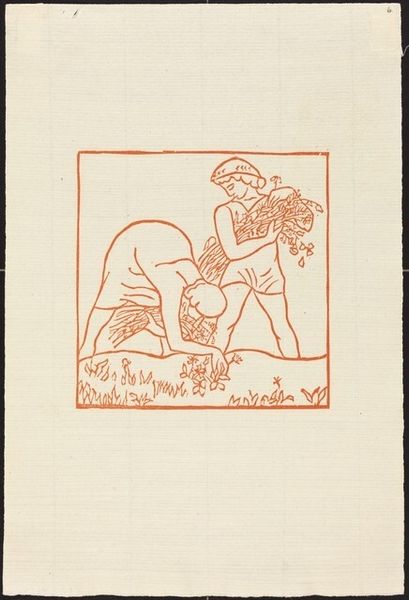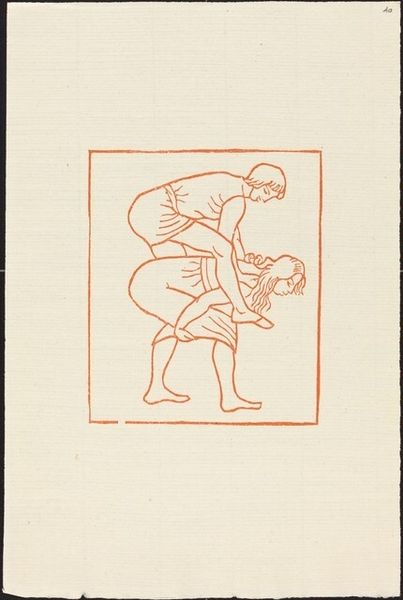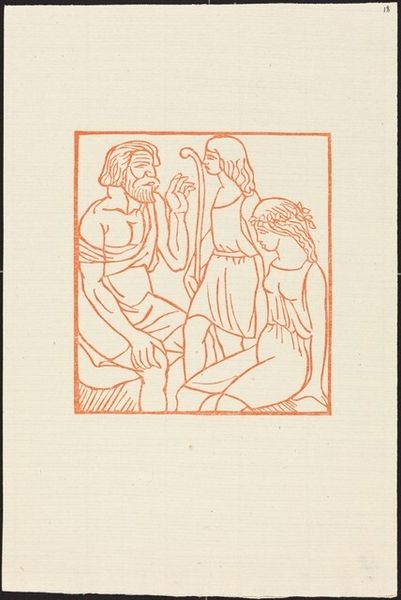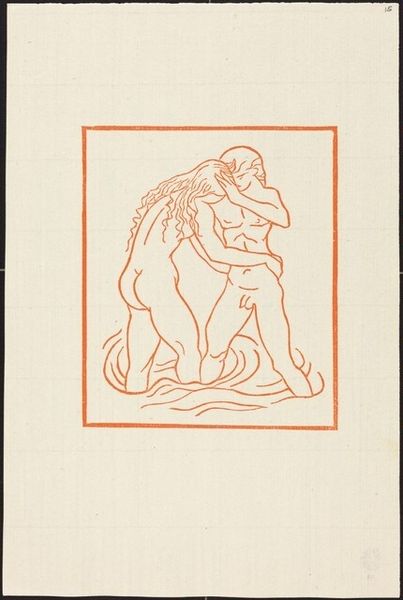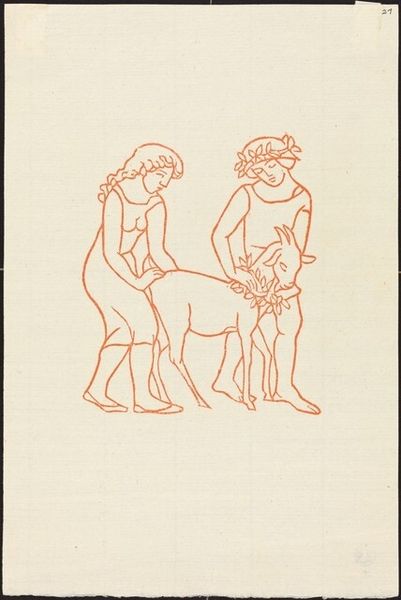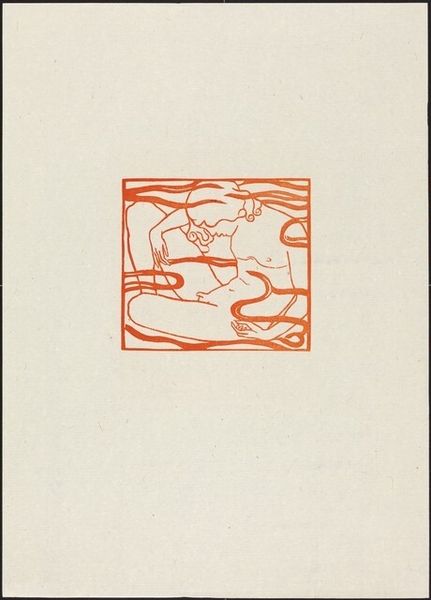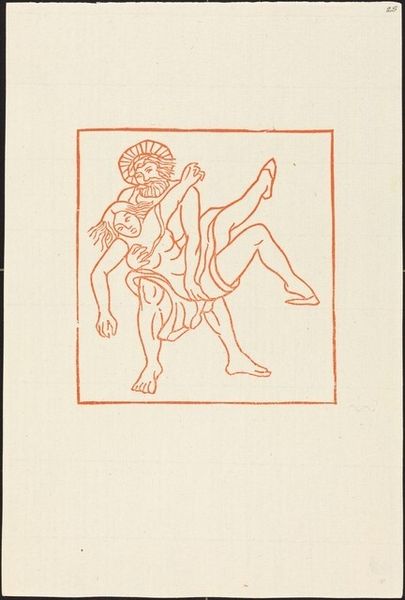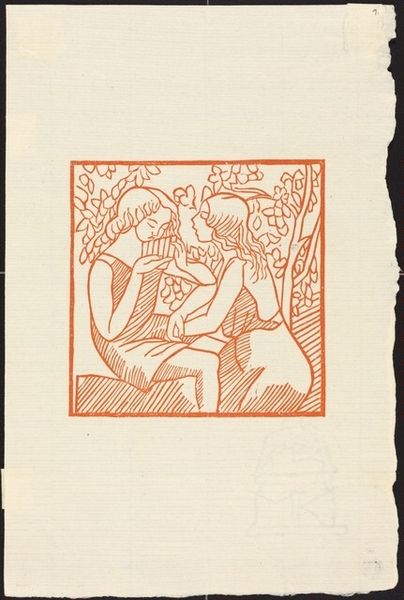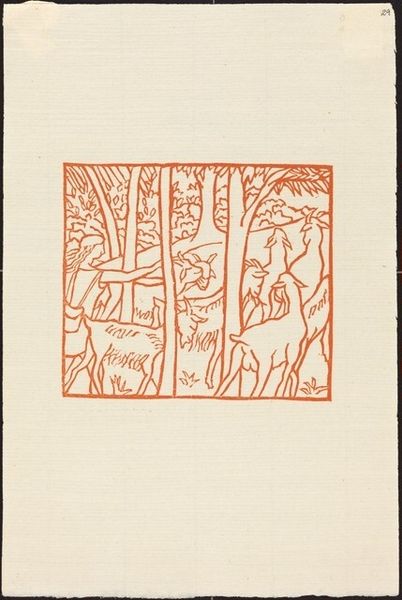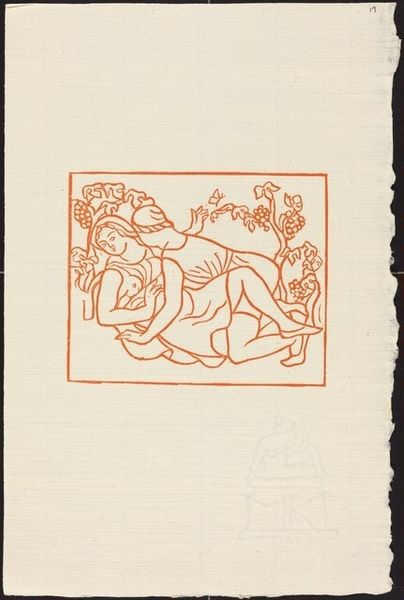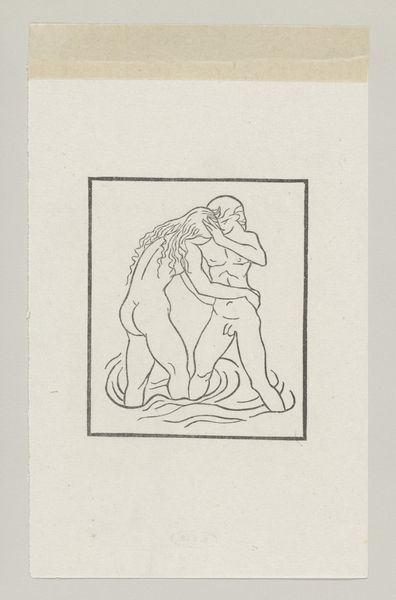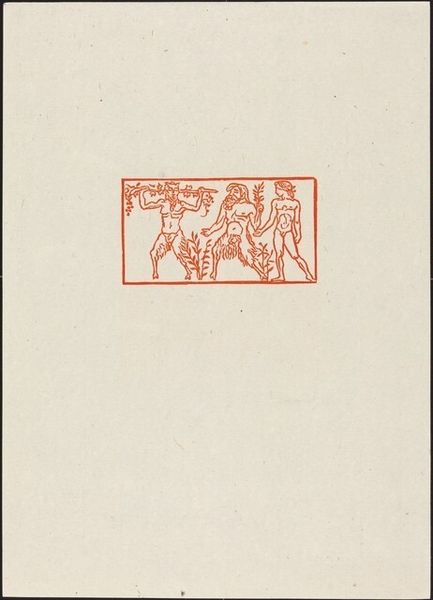
First Book: Chloe Puts a Chaplet Upon Daphnis' Head (Chloe met une couronne sur le tete de Daphnis) Possibly 1937
0:00
0:00
drawing, print, ink
#
drawing
#
ink drawing
#
pen drawing
# print
#
pen illustration
#
pen sketch
#
landscape
#
figuration
#
ink
Copyright: National Gallery of Art: CC0 1.0
Curator: This delicately rendered piece is titled "First Book: Chloe Puts a Chaplet Upon Daphnis' Head," possibly created around 1937 by Aristide Maillol. It's a drawing, likely an ink print, showing a scene of pastoral intimacy. Editor: My first thought is of its serene simplicity. The warm, almost faded, terracotta ink gives it a feeling of antiquity, doesn't it? Like something unearthed from a forgotten dream. Curator: Absolutely. The scene is rooted in Longus's ancient Greek novel Daphnis and Chloe, a love story about two foundlings raised as shepherds. Here, Chloe is crowning Daphnis with a chaplet, a wreath, which speaks to the theme of initiation into love. Editor: The wreath itself is so laden with symbolism. Historically, it represents victory, honor, and even divinity. To place it upon Daphnis’s head… she’s almost elevating him, declaring him worthy. Is there a tradition or historical context of what this would signify beyond the act of admiration? Curator: The chaplet is often a symbol of Apollo, and this recalls not only his connection to the laurels, but also the power of the gods. This wreath acts not only as an embrace between lovers, but also signifies purity, representing the transition between maiden and matron for Chloe and Daphnis. This embrace suggests transformation. Editor: Transformation is key, I agree! The almost rough, unrefined strokes—they almost have a childlike quality—remind me of frescoes, and create such a primal emotional current between them. Also notice how this print offers the hint of what is to come on the page and how they relate as a symbol. How interesting... Curator: It certainly is a sketch imbued with layered meanings. Beyond its aesthetic charm and references to classical literature, this piece reminds us of the profound, timeless power of visual imagery to evoke and transmit cultural narratives of romance and transition, even love. Editor: Indeed. This image, with its deceptive simplicity, pulls us into a timeless story of innocent love, its symbols echoing long after we look away. What a treat!
Comments
No comments
Be the first to comment and join the conversation on the ultimate creative platform.
